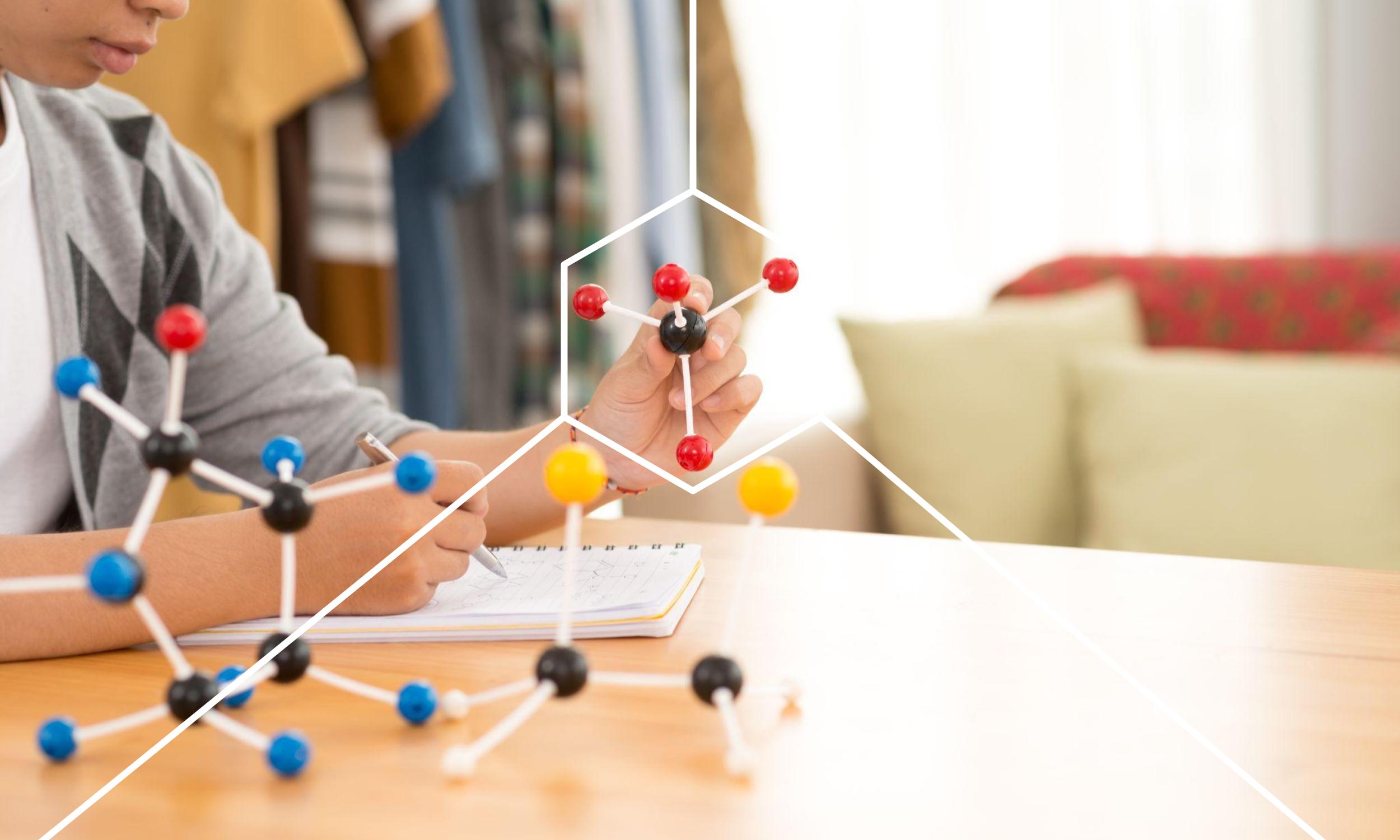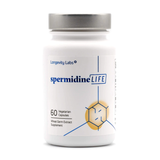
Living a long and healthy life is a goal for most people. Many people can obtain that goal by following steps like eating healthy, exercising, and taking high-quality supplements. Whether you’re 20 years old or 50 years old, it’s never too late to start making healthy choices. Learning more about the body’s processes can be key in extending your longevity and living a long, happy, and healthy life.
What Are Polyamines?
Unless you have a science background, you may be wondering, "what are polyamines?" Polyamines are organic compounds that have more than two amino groups. Some groups of polyamines like alkyl polyamines are naturally occurring but can also be synthetic. They are also hygroscopic, water-soluble, and colorless with a near-neutral pH. Some polyamines like spermidine and spermine are low-molecular-weight and are found in all forms of life. In mammals’ brains, polyamines are found in high concentrations.
Even though scientists are aware that the biosynthesis process of polyamines in the body is highly regulated, it’s still a mystery as to the biological function of polyamines. When polyamine biosynthesis is inhibited, it slows down or stops cell growth, but adding them back can restore the growth of the cells. Interestingly enough, it’s been shown that polyamines have the ability to cross the blood-brain barrier.
What Are The Functions Of Polyamines?
The functions of polyamines have been extensively studied in mammals, specifically the polyamines spermine and spermidine. They play an essential role in cell proliferation and growth, and stabilize the negative charges of RNA transcription, DNA, block potassium channels, and act as antioxidants. The activity of ion channels, oxidative damage protection, and cell proliferation are all directly affected by the two polyamines, spermine and spermidine. Spermidine is essential for viability, and the correct spermine/spermidine ratio is important in normal growth and development of mammals. A normal polyamine content is necessary for a wide variety of basic cellular functions. Most cellular polyamines are bound to RNA, and the polyamine content in rapidly growing tissues is higher than in slower-growing tissues.
The highest antioxidant polyamine is spermidine, as it has a higher number of positive charges, making it excellent at metal chelation. Polyamines may also help eliminate free radicals. During times of wound healing, aging, rapid cell growth, and after surgery, the need for polyamines is increased.
What Are Polyamines Examples?
Some polyamine examples include the principle examples of spermine, spermidine, putrescine, and thermospermine. In the body, spermidine is synthesized from putrescine, whereas spermine is synthesized from the reaction of SAM and spermidine in the presence of the enzyme spermine synthase. Due to various mechanisms of action, spermidine is considered a longevity agent in mammals. At the molecular level, autophagy is the main mechanism. Autophagy is the process of cellular renewal and growth. Spermidine is a precursor to spermine and thermospermine, making it an incredibly important polyamine to have in high concentrations in the body, especially during times of rapid cell growth.
Spermine is involved with cellular metabolism and is found in eukaryotic cells. Spermine has an association with nucleic acids and is thought to assist in stabilizing RNA by binding directly to its helical structure, especially in viruses. Spermidine is often found in living tissues and ribosomes and has various metabolic functions in organisms. Thermospermine is actually an enzyme that helps with catalyzing the reaction of other compounds.
What Foods Contain Polyamines?
Now that you know more about how important polyamines are to the body, you may be wondering how to get more into your body to help increase your health and longevity. Luckily, there are naturally occurring polyamines in food. To increase the levels in your body, you can simply consume foods that contain higher levels of polyamines. Foods that naturally contain high levels of polyamines are:
- Mushrooms
- Peas
- Hazelnuts
- Pistachios
- Spinach
- Broccoli
- Wheat germ
- Soybeans
- Cauliflower
- Green beans
Not only do polyamines have antioxidant properties, but they add anti-inflammatory effects. They may provide protection against cardiovascular disease, diabetes, aging, and cancer. The first exposure for mammals generally is through breast milk or infant formula. Spermidine is present in all plant-derived foods, so eating vegetables throughout one’s life is extremely important to ensure adequate consumption of polyamines.
While all plants do contain polyamines, fruits are lower in levels than vegetables. The variability of the levels of polyamines can be due to different factors, including growing conditions, their origin, harvesting, and storage. The polyamine levels can be affected by stress on the plants with low or high cultivation temperatures or even drought. Measuring the amount of polyamines contained within foods can be difficult and the concentrations vary widely.
Do Plants Contain Polyamines?
Polyamines are found freely in plants, even appearing in plant tumors and RNA viruses. Certain plants contain different levels of polyamines, and the polyamine levels vary depending on the type of plant. Polyamine and plants have an interesting relationship, as the different parts of the plants can contain different levels of polyamines. For example, the leaves of the plant contain the highest levels of putrescine, with the levels being three times higher than spermine or spermidine. In other organs, the levels of spermidine tend to be the highest concentration of polyamines.
Different types of polyamines also exhibit different localization patterns within cells. Spermine is concentrated in the cell wall, but putrescine is concentrated in the cytoplasm in carrot cells. More vigorous metabolism and plant growth tend to be associated with higher polyamine content and biosynthesis.
What Are Polyamines in Bacteria?
The most common polyamines in bacteria are putrescine and spermidine. Research has indicated that polyamines in bacteria are involved in many other functions than just growth. With their antioxidant properties, they can act as free radical scavengers, targeting and dissolving unwanted organisms. Polyamines are also important in biofilm production, allowing cells to be engulfed by a slimy texture, providing a protective barrier that is difficult to break through.
Different bacterial species make up the intestinal microbial flora. Bacteria, fungi, protozoa, and viruses live in a symbiotic colony, with each part providing an important part of the metabolism of non-digested food compounds. This microbial colony can assist the host with a flood of nutrients such as vitamins and amino acids. Environment, diet, and health status can all have an impact on this microbiome.
Where Are Polyamines Found?
Many people wonder where polyamines are found, as they assist in the cellular division as well as the synthesis of DNA and RNA and proteins in plants. Not only do they aid in these processes, but they also aid in pollen development and stem elongation as well. They are also involved in the fruit ripening process, and research has shown that polyamines may increase the shelf life of fruits. Peroxide level, browning, and ethylene production may all be impacted by polyamine levels of fruits.
As we age, cells become damaged and fatigued. It’s important for cells to be renewed and restored, as they create energy, store and release oxygen, and communicate with each other to assist in maintaining our health. Wheat germ is one of the highest concentration sources of spermidine, one of the most common polyamines. Spermidine helps with the autophagy process of cellular renewal, which can be triggered by fasting, exercise, or supplementation.
Supplements May Help
With all the wonderful benefits that polyamines add to mammals, you may want to supplement your diet with polyamines. Eating some of the above-listed foods is a great way to increase the polyamines in your diet, but it often isn’t realistic to get a high enough level through food only. Using a high-quality spermidine supplement is a great way to get higher levels of spermidine in your body.
Spermidine supplements induce autophagy and cellular renewal, and rejuvenation naturally, resulting in a boosted immune system and better overall cellular health. It has the ability to cross the blood-brain barrier, providing the brain with protection from injury, as well as providing cardiovascular protection and support in a cardiovascular event.







